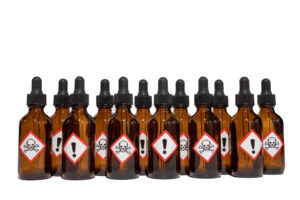The cancer world is incredibly difficult to navigate, even before considering the existing systemic disparities for the LGBTQI population. Barriers in access to healthcare and insufficient provider education — to name two such issues — create additional challenges for preventing, detecting and treating cancer among the queer community. The National LGBT Cancer Network addresses these gaps across the oncology landscape through education, training, and advocacy to improve the lives of LGBTQI cancer survivors and those at risk for cancer.
Founded in New York City in 2007 (originally known as The LGBT Cancer Project), the National LGBT Cancer Network provides cancer-specific education and resources for the queer community — from cancer screenings and prevention to support through diagnosis, treatment and survivorship.
“We are a systems change organization,” says NFN Scout, the National LGBT Cancer Network’s executive director. “We want to change the cancer screening, treatment and care system so it’s accessible for queer people.”
The organization’s website offers a plethora of educational articles for the LGBTQI community covering such topics as finding LGBTQI-friendly healthcare providers, along with specific prevention and screening information categorized by cancer type.
To address the healthcare system more broadly, the National LGBT Cancer Network also offers competency training for providers. This aims to make healthcare providers and facilities more welcoming and accessible for the LGBTQI community, ranging from preventative care and screenings to next steps after a cancer diagnosis.
Scout notes that “the cancer infrastructure is often mute” when it comes to serving the queer community. If a healthcare facility or doctor does not actively demonstrate that they are a welcoming place for the LGBTQI community, many queer individuals will not feel safe seeking care in that facility, as they face the risk their gender identity and/or sexual orientation may not be recognized, understood or treated appropriately. “We see those signs at restaurants all the time, [that say] everyone is welcome here, all genders, all orientations. But what about at the doctor’s office — how do we know they are welcoming?” Scout says.
If they don’t feel welcomed in a particular healthcare system, LGBTQI individuals may not establish a primary care doctor to receive regular checkups, including cancer screenings. For those who do eventually receive a cancer diagnosis, this may occur when the cancer is more advanced and more difficult to treat. This is how many LGBTQI individuals are ultimately denied the critical cancer-related information, screening and care they deserve.
To break this cycle, then, what does it mean for a provider to be LGBTQI-friendly? Scout explains that one indicator of a welcoming healthcare facility is using pronouns on staff name tags and asking for pronouns on intake forms. Additionally, doctors and staff should be knowledgeable about transgender healthcare during intake appointments and while providing appropriate cancer screenings for these patients. For example, some trans men need regular mammograms.
Healthcare communications and images also need significant improvement regarding LGBTQI inclusion, and breast cancer is one of the most obvious culprits. Typical language and images used to represent breast cancer and breast health are hyper-feminine — not to mention the “pink-ing of everything” during October for Breast Cancer Awareness Month, Scout says.
Although the use of feminine language and images may seem like a harmless and valid choice for breast cancer, any person of any gender can be diagnosed with breast cancer. Even among patients who identify as female, many may not see themselves and their caregivers represented in the messages and images typically used to represent the breast cancer experience. Even a cancer screening facility called a “women’s health center” instead of an “imaging center” can alienate those who don’t identify as women.
Gender assumptions also arise in the world of breast cancer treatment, notably when a surgeon assumes that their patient would like breast reconstruction after a mastectomy. In reality, different options are available, and each patient should be treated as a unique individual facing this decision. Aesthetic flat closure — a surgery that intentionally leaves a flat chest with no loose skin or breast tissue — should be offered to patients as a perfectly healthy and valid option. Unfortunately, individuals often need to speak up against their doctors’ assumptions and advocate for this option as an alternative to breast reconstruction with autologous tissue or implants. As these heteronormative assumptions break down, breast cancer surgery will become more LGBTQI-inclusive as well.
These are just a few examples of areas where healthcare providers can improve access for the LGBTQI population, Scout says. With help from the National LGBT Cancer Network’s competency training and other resources, healthcare providers can be more welcoming and accessible for the queer population to better serve all patients. In turn, this can lead to better health outcomes, both in preventing cancer and in better treatment options when a cancer diagnosis arises.
What can individuals do about these issues, whether or not they personally identify as queer? Scout encourages all people to find a “medical home” they trust — an established primary care doctor who will guide them through necessary screenings as they age. It’s also important to check in on friends, especially those who identify as queer, and encourage them to find and use those medical homes. This will ultimately help get them in the routine of cancer screenings as well.

NFN Scout, Executive Director,
National LGBT Cancer Network
Scout is optimistic for the future of LGBTQI-welcoming oncology, given the exponential growth in interest the National LGBT Cancer Network has seen in recent years. “There’s still so much work to be done, and we’re working to keep up with demand,” he says.
Learn more about the National LGBT Cancer Network at www.cancer-network.org. Welcoming Spaces training for healthcare professionals is available at https://bit.ly/welcoming-spaces.







